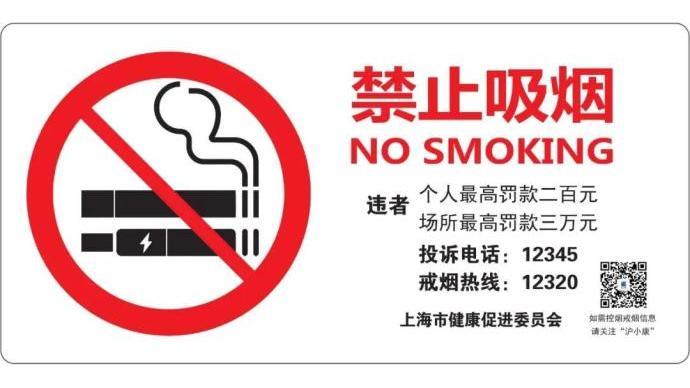Blog
“Please Refer to the Signs for Smoking Areas”: Decoding the Humanized Management Wisdom in Shanghai’s Smoking Control


原始尺寸更换图片
p3-flow-imagex-sign.byteimg.com
In Shanghai’s subway platforms, shopping mall corridors, or park corners, observant people will notice a special sign – “Please refer to the signs for smoking areas”. This seemingly simple guiding phrase is actually a concentrated embodiment of the humanized wisdom in Shanghai’s smoking control management system. It breaks away from the rigid constraint framework of “prohibition” and “no”, and adopts a flexible attitude of “prompting” and “guiding”, finding a delicate balance between safeguarding public health and respecting diverse needs, thus becoming a vivid footnote to the refined governance of this international metropolis.
From “Ban” to “Guidance”: The Management Temperature in the Discourse System
Traditional smoking control management often falls into the mindset of “a complete ban”. Although the bright red “No Smoking” sign has legal deterrence, it is also easy to build an antagonistic barrier in the public’s psychological level. Shanghai’s “Please refer to the signs for smoking areas” has realized a creative transformation of the discourse system: it does not directly deny the existence of smoking behavior, but shifts the management focus to “standardizing the spatial boundaries of smoking behavior”. This expression implies three levels of humanized considerations:
Firstly, acknowledging the rationality of needs. Under the framework of smoking control regulations, Shanghai does not regard the smoking group as the “opponent of management”. Instead, it reserves necessary space for smokers within the scope permitted by law by setting up compliant smoking points and clear sign guidance. For example, in some open public areas, eye-catching signs are posted outside the uniformly planned smoking pavilions, which not only prevent the spread of second-hand smoke but also spare smokers from the dilemma between “violating regulations” and “enduring”. Like in Shanghai Xuhui Sports Park, there are two types of outdoor smoking points: open-air and covered. The open-air ones are about 1 square meter with yellow warning lines drawn on the ground, and the covered ones are about 3 square meters, distributed on both sides of the outdoor stairs of the stadium and gymnasium. They provide convenience for citizens who come for sports and leisure and have smoking needs. The signs are clear and the locations are planned reasonably, reducing the impact on other people.
Secondly, reducing the trial-and-error cost of behavior. For foreign tourists or citizens who are not familiar with the environment, the guiding nature of “please refer to the signs” is more practical than the warning nature of “No Smoking”. In crowded places such as Disneyland and Hongqiao Transportation Hub, colorful arrow signs are combined with smoking point distribution maps to form a clear spatial guidance system, enabling smokers to quickly find compliant areas and fundamentally reducing the phenomenon of “unconscious violation”. From May 29, 2025, Shanghai Disney Resort has strengthened smoking control measures, significantly reduced the number of designated smoking areas, adjusted the locations of some smoking areas, and comprehensively updated the “No Smoking” and “Designated Smoking Area” signs in the resort, adding e-cigarette signs. After the update, more than 2,800 “No Smoking” signs have been posted in various places in the resort, including the main entrances and exits, catering areas, queuing areas and other passenger gathering places in the park, Disney Town and other areas. Together with the updated information on designated smoking areas on the resort’s official website and App and other platforms, it has greatly facilitated tourists to understand smoking regulations and avoid violations.
Thirdly, conveying the concept of equal governance. This prompt treats managers and those being managed equally: for smokers, it is a kind reminder of behavioral boundaries; for non-smokers, it is an implicit guarantee of public space rights and interests; for managers, it is a concrete expression of the governance idea of “combining dredging and blocking”. This equal perspective dispels the antagonistic emotions in management, transforming smoking control from “unilateral law enforcement by the government” to “a rule consensus with joint social participation”.
From “Signs” to “System”: The Code for Implementing Refined Governance
“Please refer to the signs for smoking areas” is by no means an isolated management method, but a product of the in-depth linkage between the “sign system” and “supporting mechanisms” in Shanghai’s smoking control system. This city uses a set of interlocking refined operations to make the small signboards exert governance efficiency beyond expectations.
In terms of sign design, Shanghai has broken through the singularity of traditional smoking control signs and built a multi-level visual guidance system. The core smoking points adopt the national standard style of “red background with white patterns”, supplemented by the warning phrase “Smoking is harmful to health”; while the guiding paths adopt a soft design of “blue background with white arrows”. In sensitive areas such as hospitals and schools, progressive prompts like “50 meters away from the smoking point” are added. This differentiated design not only conforms to the rigid requirements of the “Regulations on Smoking Control in Public Places in Shanghai” but also makes the smoking control guidance in different scenarios more acceptable through the temperature adjustment of visual language.
What is more worthy of attention is the dynamic management mechanism behind the signs. The Shanghai Health Promotion Commission, together with urban management, transportation and other departments, has established a closed-loop system of “dynamic evaluation – adjustment – publicity” for smoking points. Every year, the existing smoking points are optimized according to citizen complaint data and environmental monitoring results: in Hongqiao Airport Terminal T2, because passengers reported that the smoking points were too far from the boarding gates, the management completed the planning and sign update of new smoking points within 3 months; in the renovation of old residential areas, the location of outdoor smoking points was determined through residents’ hearings, and fluorescent signs were used to solve the problem of nighttime recognition. This flexible mechanism of “signs changing with needs” keeps management in sync with citizens’ feelings.
In addition, Shanghai has deeply integrated the sign system with digital governance. The “Healthy Shanghai” App has launched the “smoking point query” function, allowing citizens to check the location, sign photos and opening hours of nearby compliant smoking points in real-time through the map; in some business districts, smart screens dynamically display “currently recommended smoking points” according to the flow density and simultaneously push smoking control knowledge. This linkage mode of “online guidance + offline signs” enables humanized management to break through the limitations of physical space and extend to citizens’ daily digital life.
From “Smoking Control” to “Co-governance”: The Cultivation Path of Urban Civilization
The profound value of “Please refer to the signs for smoking areas” lies in that it builds a channel for cultivating civilization from “passive compliance” to “active participation”. In Shanghai’s smoking control practice, signs are not only management tools but also carriers for condense social consensus, promoting the transformation of smoking control from “government governance” to “social co-governance”.
This transformation is reflected in the empowerment of multiple subjects. For merchants, Shanghai has implemented the certification of “smoking control self-disciplined merchants”, encouraging catering and entertainment venues to independently manage smoking behavior through unified sign posting and staff training subsidies. Nowadays, outside the internet-famous restaurants in Xintiandi, it is common to see waiters actively guiding customers to compliant smoking points. These merchants are not passively implementing the regulations but regard “standardized smoking” as a competitive advantage to improve service quality. CapitaLand Hongkou Commercial Center has actively responded to smoking control requirements, timely replacing the no-smoking signs in key places such as public passages and restrooms. The mall management has carefully checked to ensure that all should be replaced. For customers who smoke in the mall, the staff mainly persuade and guide them, and most customers can cooperate. A few customers who smoke in the restrooms will promptly put out their cigarettes after being persuaded, creating a good smoking control environment.
For teenagers, “signs” have become vivid health education textbooks. In the “Smoking Control Little Guards” activity carried out in primary and secondary schools, students understand the public health significance behind smoking control rules through practices such as drawing “ideal smoking point signs” and investigating the coverage rate of community signs. This participatory education is far more effective than simple preaching: data shows that the smoking rate of teenagers in Shanghai has declined for five consecutive years, among which “understanding the rules” is listed as the primary reason.
A more far-reaching impact is on the shaping of the urban civilization temperament. In Shanghai, whether to pay attention to smoking signs and whether to take the initiative to go to compliant areas have gradually become implicit criteria for measuring public space civilization. A foreign tourist once shared on a social platform: “When I want to smoke on the streets of Shanghai, I will subconsciously look for signs – not because I am afraid of fines, but because I think it is a basic respect for others.” This transformation from “heteronomy” to “self-discipline” is the most precious achievement of humanized management.
From the skyscrapers in Lujiazui to the street parks in the alleys, the prompt of “Please refer to the signs for smoking areas” is quietly changing the public life of this city. It proves that the best management is not strict defense against the opposite side, but goodwill guidance from the standpoint of the community. When rules can be understood, recognized and actively practiced, smoking control is no longer a cold provision but a nutrient for nourishing urban civilization. This is perhaps the most profound revelation left by Shanghai’s smoking control practice.






